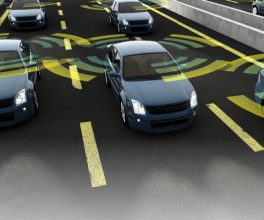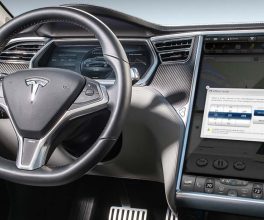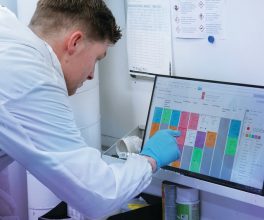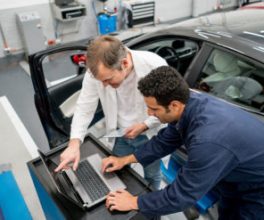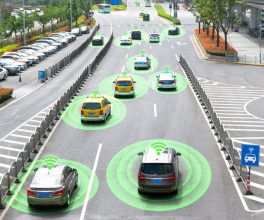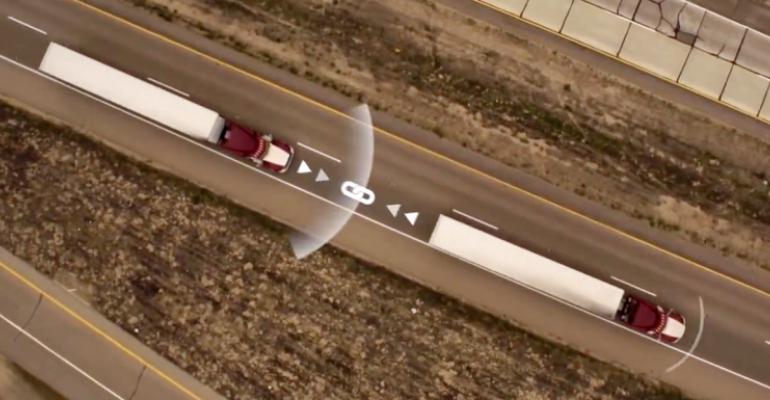Safety on the highways relies on massive data integration
More and more trucks include smart sensors to send information about truck location and operating conditions. Daimler, a German multinational automotive corporation, has already connected around 500,000 trucks to the internet of things (IoT). This trend is expected to continue to grow and it is estimated that by 2020, more than 35 million trucks globally will be connected. Even now, nearly 40 percent of fleet managers believe connected trucks are a “must have.”
Connected trucks as convoys
Today, connected trucks are not just communicating with back office systems, but rather they are sharing data with each other. Connected trucks have evolved to become platoons, where trucks at the back of the formation are able to automatically and closely follow a lead vehicle.
Platoons are gaining more interest because they introduce incredible cost savings. Truck drivers can rest in semi-autonomous trucks, which can increase their productivity. In addition, platoons are much safer. Daimler Trucks has lowered the response rate from one second for human drivers to about 0.2 or 0.3 seconds for connected trucks. WiFi-based vehicle-to-vehicle communication (V2V), adaptive cruise control, lane departure assist and active brake assist have introduced a whole new level of safety.
These semi-autonomous trucks driving in formation are already on the road. Daimler has announced that it received permission to test platooning in Oregon. Last April, five other brands besides Damiler— DAF Trucks, Iveco, MAN Truck & Bus, Scania and Volvo Group—drove semi-automated trucks in platoons, on public roads from several European cities to the Netherlands. Tesla Inc, which has been a leader in developing self-driving technology for its luxury cars, is developing a long-haul, electric semi-truck that can drive itself and move in platoons. Scania is testing platooning in Singapore and Volvo is piloting the concept in Europe.
Connected trucks fueled by data
One of the most serious challenges to face before connected trucks can hit the highway is finding ways to efficiently and securely share all the data that is required. There are several different types of devices, sensors, controllers and applications that need to speak to each other and share data seamlessly. All this data can be used not only to make trucks safer and secure but also to improve customer service.
Now, take into account that connected trucks can also be part of a platoon, all of this information may need to be cross-referenced and shared between trucks in the same group.
At a minimum, temperature, moisture, wind, the rate of acceleration, and braking need to be monitored and transmitted in real time. A truck’s location and when the truck’s back door is opened needs to be monitored to see if the truck is off course or if there has been an unauthorized access. Humidity and temperature need to be tracked to protect sensitive cargo. To extend equipment life and prevent accidents, truck consoles need to share diagnostics and service records.
Today, many drivers are also responsible for checking inventory at stores, and for placing orders. In order to check customer financial status and product availability as well as process invoices, drivers need to access databases in the back office using hand-held devices, and consoles.
In addition to collecting and processing this data, it also needs to be protected. It’s essential to include safeguards to prevent data loss and hackers from interfering and causing data leaks, accidents, misdirection or other types of mischief.
In response to all the data management demands, fleet managers have started to move towards more advanced and all-inclusive integration platforms that enable the sharing of information between drivers, vehicles and the whole logistical network.
Frequently, different software and hardware components speak different languages, which means that integrating the systems can be a challenge. With the increase in the amount of data, the cost of communications and the need to tweak information flows for more efficiency, middleware can be an option to ensure a seamless flow of information. Well-managed data is also necessary to ensure that companies can document compliance and have the flexibility to react quickly to future changes in regulations. Middleware can also empower fleet management by enabling data to be handled in a secure way and by providing elastic scalability to manage large volumes of data.
Connected trucks are not the wave of the future—they are already here. The imperative to manage data securely and reliably will be even more important when semi-autonomous trucks are part of a convoy. Finding cost effective and reliable ways to collect, share, and analyze data efficiently will help overcome a major obstacle to putting autonomous trucks on the road, especially when they are part of a convoy.
Author – Javier Jiménez
Courtesy of FleetOwner

